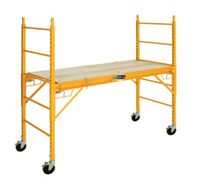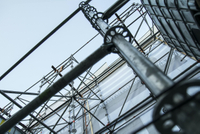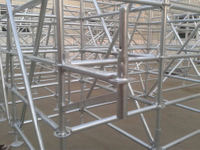Content Menu
● Introduction to Steel Frame Scaffolding and Aluminum Scaffolding
● Longevity of Steel Frame Scaffolding
>> Durability and Lifespan
>> Maintenance Requirements
● Longevity of Aluminum Scaffolding
>> Durability and Lifespan
>> Maintenance Requirements
● Comparative Analysis: Steel Frame Scaffolding vs Aluminum Scaffolding Longevity
● Practical Considerations Affecting Longevity
>> Environmental Exposure
>> Usage Frequency and Load Demands
>> Cost Implications Over Time
● Additional Factors Influencing the Lifespan of Steel Frame Scaffolding
>> Quality of Steel and Manufacturing Process
>> Protective Coatings
>> Handling and Storage
● Conclusion
● FAQ
>> 1. How long does steel frame scaffolding typically last?
>> 2. Does aluminum scaffolding rust?
>> 3. Which scaffolding material has better load-bearing capacity?
>> 4. Is aluminum scaffolding easier to handle than steel?
>> 5. What maintenance does steel scaffolding require to last longer?
In the construction industry, choosing the right scaffolding material is crucial for safety, efficiency, and cost-effectiveness. Among the most popular options are steel frame scaffolding and aluminum scaffolding. Both materials have their unique advantages and limitations, but one of the key concerns for contractors and project managers is the longevity of these scaffolding systems.
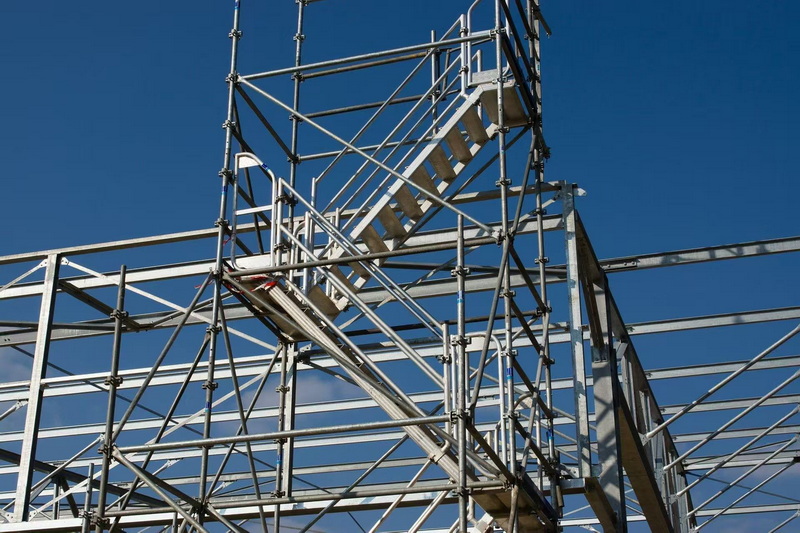
Introduction to Steel Frame Scaffolding and Aluminum Scaffolding
Scaffolding is an essential temporary structure used to support workers and materials during construction, maintenance, or repair of buildings and other structures. The two dominant materials used in scaffolding are steel and aluminum.
- Steel Frame Scaffolding is known for its exceptional strength, durability, and load-bearing capacity. It is often chosen for heavy-duty and large-scale construction projects.
- Aluminum Scaffolding is favored for its lightweight properties, ease of assembly, and corrosion resistance, making it suitable for projects requiring frequent relocation or lighter loads.
Understanding the lifespan and performance of these materials under different conditions is vital for making an informed choice.
Longevity of Steel Frame Scaffolding
Durability and Lifespan
Steel frame scaffolding is renowned for its robustness and long service life. Properly maintained steel scaffolding can last 20 to 30 years or more, depending on usage and environmental conditions. The key factors contributing to its longevity include:
- High Strength: Steel has a yield strength ranging from 250 to 550 MPa, which allows it to withstand heavy loads and harsh working conditions without deformation.
- Corrosion Resistance: When galvanized or powder-coated, steel scaffolding resists rust and corrosion effectively, extending its usable life even in outdoor environments exposed to rain, sun, and chemicals.
- Wear and Tear Resistance: Steel's toughness makes it less susceptible to dents, bending, or fatigue compared to aluminum, especially in heavy-duty applications.
Maintenance Requirements
Steel scaffolding requires regular maintenance to prevent rust, especially if the protective coatings are damaged. This includes:
- Periodic inspections for corrosion or structural damage
- Re-galvanizing or repainting exposed steel surfaces
- Proper storage when not in use to minimize exposure to moisture
With diligent maintenance, steel scaffolding remains a cost-effective investment over decades.
Longevity of Aluminum Scaffolding
Durability and Lifespan
Aluminum scaffolding is naturally corrosion-resistant due to the formation of a protective oxide layer on its surface. This characteristic allows aluminum scaffolding to last 20 years or more, particularly in environments where rust is a concern. Key points include:
- Corrosion Resistance: Aluminum does not rust, making it ideal for humid, coastal, or chemically aggressive environments.
- Material Fatigue: Despite corrosion resistance, aluminum is softer and more prone to dents, bending, and fatigue over time, which can shorten its lifespan if not handled carefully.
- Longevity in Practice: Many companies report aluminum scaffolding systems remaining intact and functional after 20 years of use, provided they are not physically damaged.
Maintenance Requirements
Aluminum scaffolding requires less maintenance than steel because it does not rust. However, it still needs:
- Regular inspections for physical damage such as cracks or bends
- Careful handling to avoid dents or deformation
- Proper storage to prevent unnecessary wear
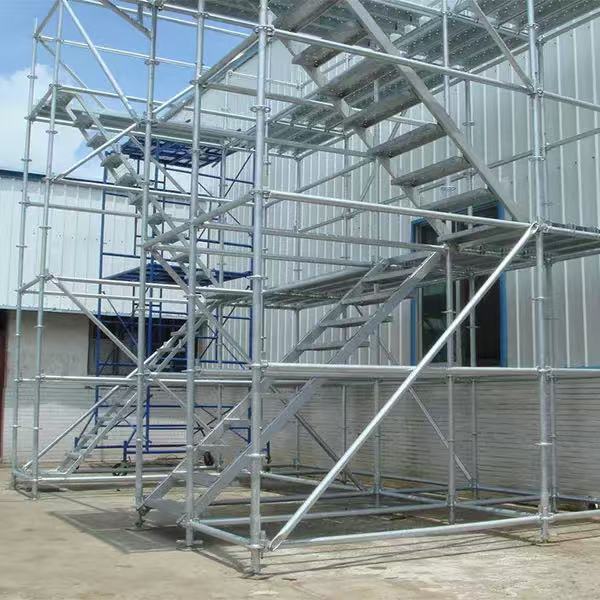
Comparative Analysis: Steel Frame Scaffolding vs Aluminum Scaffolding Longevity
| Feature | Steel Frame Scaffolding | Aluminum Scaffolding |
| Typical Lifespan | 20–30 years or more with maintenance | 20+ years, often up to 20 years or more |
| Corrosion Resistance | Requires galvanizing or coating to resist rust | Naturally corrosion-resistant |
| Resistance to Physical Damage | High resistance to dents, bending, and fatigue | More prone to dents and fatigue due to softness |
| Maintenance Needs | Regular inspections and recoating needed | Minimal maintenance, focus on damage prevention |
| Load-Bearing Capacity | Higher load capacity (250–550 MPa yield strength) | Lower load capacity (100–250 MPa yield strength) |
| Weight | Heavier, more labor-intensive to handle | Lightweight, easier to transport and assemble |
Practical Considerations Affecting Longevity
Environmental Exposure
- Steel Frame Scaffolding: In environments with high humidity, salt air (coastal areas), or chemical exposure, steel scaffolding must be properly coated and maintained to prevent corrosion, which can reduce lifespan if neglected.
- Aluminum Scaffolding: Aluminum excels in corrosive environments due to its natural resistance, often outperforming steel in these conditions without additional treatment.
Usage Frequency and Load Demands
- Steel scaffolding is better suited for projects requiring heavy load support and frequent reuse over many years.
- Aluminum scaffolding is ideal for projects with lighter loads, frequent relocation, or where ease of handling is a priority.
Cost Implications Over Time
- Steel scaffolding generally has a lower initial cost but may incur higher maintenance and transportation costs due to weight and corrosion prevention measures.
- Aluminum scaffolding has a higher upfront cost but lower maintenance expenses and improved efficiency in assembly and transport.
Additional Factors Influencing the Lifespan of Steel Frame Scaffolding
Quality of Steel and Manufacturing Process
The longevity of steel frame scaffolding greatly depends on the quality of steel used and the manufacturing process. High-quality steel with proper alloying and heat treatment can significantly enhance resistance to fatigue and corrosion.
Protective Coatings
Galvanization (zinc coating) is the most common protective treatment for steel scaffolding. Hot-dip galvanizing provides a thick, durable layer that protects against rust and abrasion. Powder coating is another option that adds color and additional corrosion resistance.
Handling and Storage
Proper handling during transport and storage affects the lifespan of steel scaffolding. Avoiding scratches and dents that expose bare metal is critical to prevent rust formation.
Conclusion
When comparing the longevity of steel frame scaffolding and aluminum scaffolding, both materials offer significant service lives but differ in durability factors and maintenance needs. Steel scaffolding is unmatched in strength and load-bearing capacity, typically lasting 20 to 30 years or more with proper maintenance, especially in heavy-duty or harsh environments. Aluminum scaffolding, while naturally corrosion-resistant and lighter, may have a similar lifespan in less demanding conditions but is more susceptible to physical damage.
Choosing between steel and aluminum scaffolding depends on project requirements, environmental conditions, budget, and handling preferences. For long-term, heavy-duty applications, steel frame scaffolding remains the preferred choice. For projects demanding lightweight, corrosion-resistant, and easily maneuverable scaffolding, aluminum is a strong contender.
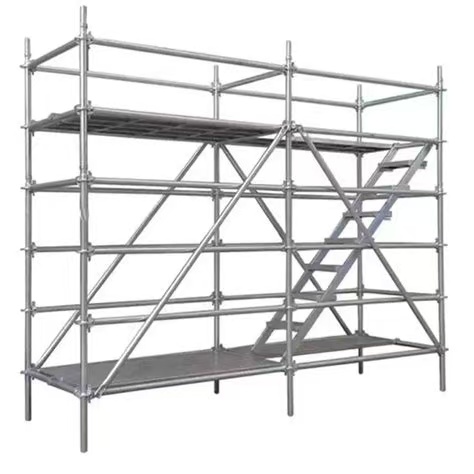
FAQ
1. How long does steel frame scaffolding typically last?
Steel frame scaffolding can last 20 to 30 years or more with proper maintenance such as galvanizing, coating, and regular inspections.
2. Does aluminum scaffolding rust?
No, aluminum scaffolding does not rust due to its natural corrosion resistance, making it ideal for humid or coastal environments.
3. Which scaffolding material has better load-bearing capacity?
Steel frame scaffolding has a significantly higher load-bearing capacity, with yield strength between 250–550 MPa, compared to aluminum's 100–250 MPa.
4. Is aluminum scaffolding easier to handle than steel?
Yes, aluminum scaffolding is much lighter, which facilitates easier transport, assembly, and repositioning on site.
5. What maintenance does steel scaffolding require to last longer?
Steel scaffolding requires regular inspections for rust or damage, recoating or galvanizing to prevent corrosion, and proper storage to extend its lifespan.













